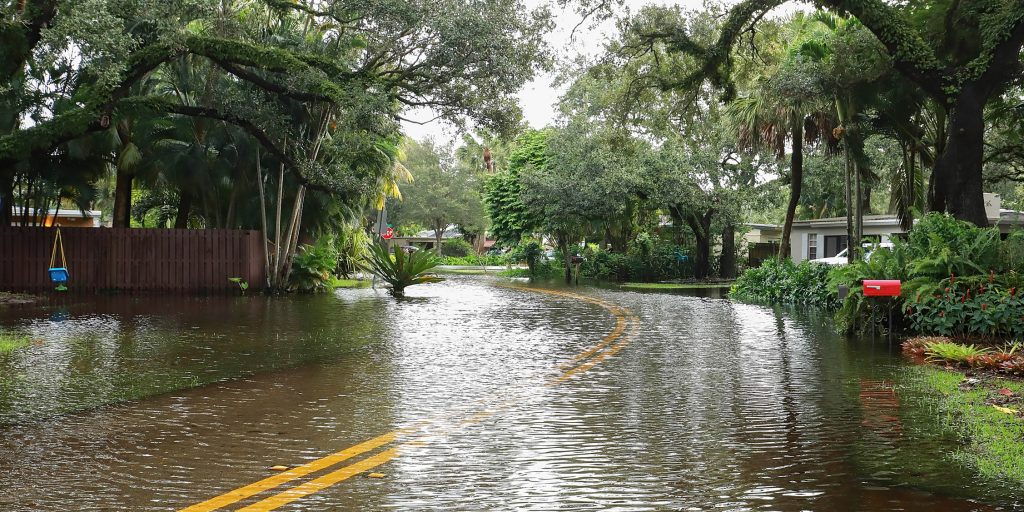How capital improvement project prioritization helps secure infrastructure funding
Trillions of dollars in federal infrastructure funding have been made available to state and local governments across the U.S. since early 2020. This money has been allocated to address the nation’s aging infrastructure, much of which is at or near the end of its useful life, and to bolster the U.S. economy in the wake of the pandemic.
However, over halfway through 2022, much of that funding remains unclaimed. The reason? Many state and local governments have not assessed and prioritized their infrastructure needs and aligned them with available funding. And time is running out.
The Infrastructure Investment and Jobs Act, which is providing $550 billion to help municipalities complete various infrastructure projects, has inherent and rapidly advancing deadlines. In most cases, state and local governments must claim available funds by 2026 or 2028. Additionally, the state and local fiscal recovery funds in the American Rescue Plan Act are only accessible until Dec. 31, 2024.
Fortunately, there are resources available to help municipalities identify, inventory and prioritize critical needs to secure this funding before time runs out. One proven resource is Capital Improvement Project (CIP) Prioritization. To understand why this process is needed, it helps to get a closer look at America’s infrastructure needs.
Understanding America’s infrastructure needs
The American Society of Civil Engineers publishes its Report Card for America’s Infrastructure once every four years. The report card grades 17 categories individually, evaluating the condition and performance of each while also examining the increasing connectedness of the nation’s infrastructure systems.
The good news is that for the first time in 20 years, U.S. infrastructure as a whole is out of the D range. According to the 2021 Report Card released in March 2022, “increased funding, better asset management and technological improvements” have helped U.S. infrastructure receive a C-. Better grades in five categories contributed to this result: aviation (D+), drinking water (C-), energy (C-), inland waterways (D+) and ports (B-).
However, despite slight improvements with some assets, many grades were still extremely poor. One went down: bridges (C); and 11 stayed the same: roads (D), schools (D+), dams (D), hazardous waste (D+), levees (D), public parks (D+), rail (B), transit (D-), solid waste (C+) and wastewater (D+).
The final category was stormwater infrastructure, which made its debut in the 2021 report at a disappointing D. Although 40 states have at least one stormwater utility to provide dedicated stormwater program funding, urban infrastructure growth and expanding impervious surface areas across the country are outpacing the implementation and maintenance of stormwater systems.
There has also been an increase in the frequency and intensity of flood events, testing the limits of an already stressed stormwater system and resulting in significant consequences. According to the National Centers for Environmental Information, the average cost of floods is $4.7 billion per event. The National Weather Service also reported 145 flood fatalities in the U.S. in 2021, which was the highest number of flood-related deaths since 2017.
By investing in the stormwater system at a time of increased need and while funding is available, municipalities will be better equipped both financially and structurally to handle future storms and reduce further damage.
The need for CIP Prioritization
CIP Prioritization provides a process for state and local governments to discuss, assess and rank capital improvement projects based on their most critical needs and then align those needs with available funding. The process can be developed in a way that is versatile enough to address a full range of infrastructure projects depending on the needs of the municipality.
The method starts by looking at new and existing projects to hash out project details, determine the project’s relevancy and assess the sense of urgency to complete the project. The essential step here is for municipalities to understand which problems matter most and then determine what funds are available to meet those needs.
While there may not be financial assistance to cover everything, the number of potential sources is significant, as evidenced by this IIJA. The law offers money for several types of projects, including the following categories and the corresponding funding available:
- Improving public notification systems during sewer overflows and heavy rainfall: $280 million
- Researching, repairing and constructing roads and bridges: $110 billion
- Upgrading and maintaining passenger and freight rail systems in the U.S.: $66 billion
- Expanding broadband in low-income communities and rural areas: $65 billion
- Updating power lines, providing clean energy and preventing hacking of the power grid: $65 billion
- Handling chemical cleanup, clean drinking water and the replacement of lead pipes in tribal communities: $55 billion
- Protecting infrastructure from cybersecurity threats and focusing on coastal erosion, wildfires, flooding and other extreme weather events: $50 billion
- Building new bus routes, increasing accessibility for the disabled and seniors, and enhancing public transit: $39 billion
- Expanding and upgrading control systems, control towers and U.S. airports: $25 billion
- Supporting projects centered on potable reuse, groundwater recharge and similar goals: $25 million
- Enhancing resilience at existing water treatment facilities: $25 million
- Cleaning up oil and gas wells, abandoned mines, and superfund and brownfield sites: $21 billion
Knowing which projects can rely on available funds—and discovering how long those funds are available—plays a crucial role in ranking initiatives. Once that evaluation phase is complete, municipalities can begin gathering the project information required for grant applications and project planning. Data should be collected to address:
- project status, costs and schedules
- infrastructure criticality
- safety and social benefits and justice initiatives for the community
- historical studies and modeling analyses
- input from leadership
- ease of implementation
- staffing considerations
- needs in moderate- to low-income areas
These data should be comprehensible in their presentation, so insights are understood and accessible to all involved parties, including stakeholders, council members and constituents. This clarity will enable transparency and justification for decisions. Additionally, a thorough understanding will empower officials and consultants to make decisions that are backed by data and motivated by their communities’ priorities, budget and needs.
Woolpert Program Director Hal Clarkson said he believes this customized process can help state and local governments make more informed decisions and create solid spending plans.
“High- to low-level cost estimates can be conducted depending on the need of the municipality, and prioritization criteria can range from detailed to simplistic,” Clarkson said. “These factors are driven by the time and money that a specific community wants to spend and the kinds of projects they wish to execute—from shovel-ready to ones that require easements and additional support. Regardless of its application, CIP Prioritization provides needed background for formulating a spending plan and making informed decisions.”
A repeatable process, empowering success
After state and local governments use this CIP Prioritization process once, they can employ this method moving forward to address various infrastructure projects and funding sources. Municipalities no longer have to miss out on meeting infrastructure needs because they don’t know how to identify, align or access available funds.
CIP Prioritization enables officials to organize their goals and be ready when funding rolls in. Even better, it leaves ample time to act on that funding. With this method, municipalities can submit grant applications early and often, providing alternatives if projects are rejected.
Due to the immense amount of funding available and the short window in which to use it, now is the time for officials to address their communities’ needs for better and safer spaces. CIP Prioritization is one tool to help state and local governments achieve those goals and do so more efficiently than ever before.
Amanda Douglas, PE, is a water resources project manager working out of Woolpert’s Columbia, S.C., office.




















